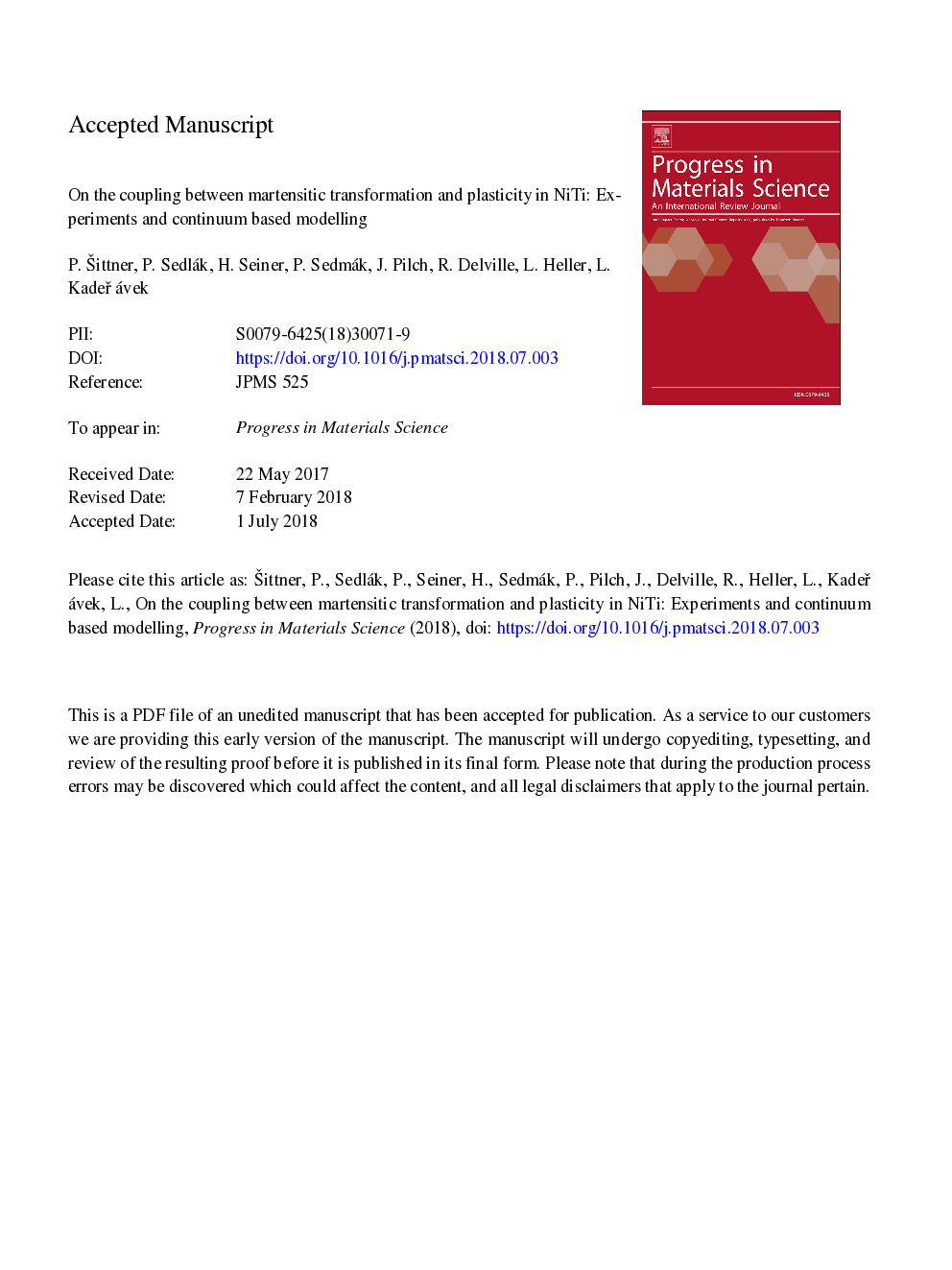| Article ID | Journal | Published Year | Pages | File Type |
|---|---|---|---|---|
| 8022926 | Progress in Materials Science | 2018 | 108 Pages |
Abstract
Recent macroscopic experimental and theoretical evidence on the stress-strain-temperature behavior of NiTi beyond the strain recoverability limits (large strain, high stress, high temperature), where reversible martensitic transformation tends to proceed together with irreversible plastic deformation processes, is reviewed. Model predictions on the transformation - plasticity coupling are laid out based on the mathematical theory of martensitic microstructures and the crystal plasticity theory. A particular attention is paid to the strain compatibility at moving phase interfaces that may have a direct impact on the plasticity accompanying the martensitic transformation. It is suggested that strong transformation-plasticity coupling shall be expected during the reverse martensitic transformation. Macroscopic models from the literature capable of simulation of thermomechanical responses of NiTi polycrystals due to coexisting martensitic transformation and plastic deformation are reviewed. Dedicated thermomechanical loading experiments on superelastic and actuator NiTi wires aimed at improving our understanding of the coupling between martensitic transformation and plasticity are presented. Based on the results of in-situ studies during thermomechanical loading experiments (electric resistance, synchrotron X-ray diffraction, surface strain by DIC, relaxations) and characterization microstructures in deformed wires by TEM, it is shown that: (i) microstructures and consequently functional properties of annealed NiTi wires can be purposely manipulated by thermomechanical processing, (ii) shape setting of NiTi can be performed at relatively low temperatures (<300â¯Â°C), (iii) strain drift of NiTi actuators can be brought under control utilizing the knowledge derived from the presented experiments.
Keywords
Related Topics
Physical Sciences and Engineering
Materials Science
Nanotechnology
Authors
P. Å ittner, P. Sedlák, H. Seiner, P. Sedmák, J. Pilch, R. Delville, L. Heller, L. KadeÅávek,
